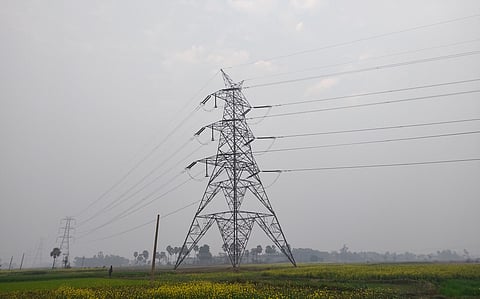

India is preparing to embed artificial intelligence (AI) deep into the operations of its national electricity grid — the largest unified power grid in the world — to enable real-time risk detection, fault prediction and market manipulation surveillance, senior officials said on September 17, 2025.
This marks a strategic shift from using AI primarily in forecasting and scheduling to deploying it as a core reliability and security layer for India’s rapidly transforming power system. With renewable energy projected to cross 500 gigawatt (GW) before 2030, grid managers warned that the system’s growing complexity demands machine-speed decision-making.
“The grid’s physical and digital layers are now inseparable. As variability increases, we can’t depend on post-fault analysis alone — AI must give us situational awareness before faults propagate,” said chairman and managing director of Grid India Samir Chandra Saxena at the KPMG energy conference.
Until now, AI in the power sector has mainly been used for load forecasting, renewable generation prediction, and revenue optimisation, especially for wind and solar. The new phase aims to go much further — using real-time streaming data at 40-millisecond resolution to track emerging instability across the network before it triggers cascading outages.
He said AI systems will detect weak points and abnormal patterns across geographically dispersed but connected assets, helping avert wide-area blackouts.
The systems will also automatically trigger corrective actions or alerts to grid control centres, reducing response times from minutes to seconds. This represents a leap in operational philosophy, shifting from reactive post-fault analysis to predictive, pre-fault intervention. Officials said the architecture will be layered into the national load despatch centre (NLDC) and gradually scaled down to state and regional control rooms.
Saxena also flagged rising cyber security and market integrity threats as grid digitalisation deepens. The national grid is increasingly interconnected with regional markets, gas pipelines, cross-border trade platforms, and financial derivatives tied to electricity, creating new vectors of risk.
AI will be deployed to monitor behavioural patterns of market participants holding simultaneous positions in physical power, fuel supply and financial contracts, to detect possible manipulative behaviour or insider collusion. Additionally, AI-driven threat hunting, anomaly detection and behavioural analytics will be introduced to combat malware or coordinated cyberattacks on supervisory control and data acquisition (SCADA) systems, he disclosed.
“We are seeing the threat perimeter blur — a cyber-attack or price manipulation at one node can ripple across the system in seconds. AI will be essential to watch for patterns humans can’t spot in real time.”
He acknowledged that AI deployment at grid scale brings its own risks, especially around false positives, bias, and over-reliance on automated decisions. To address this, “the government is preparing a national AI assurance framework for critical infrastructure, mandating explainable AI models, human-in-the-loop oversight, and clear escalation protocols for grid operations.”
There are also plans to upskill system operators and control room engineers in data science, AI ethics and algorithmic risk management to ensure trust and accountability in decision-making. The framework will draw on best practices from the EU’s AI Act and the US National Institute of Standards and Technology (NIST).
Other industry experts warned that India’s grid is entering a new era of operational complexity driven by massive solar and wind additions, rooftop and behind-the-meter generation, electric vehicle load spikes and green hydrogen clusters. “Managing a 500 GW+ renewables-heavy grid will be impossible without machine-speed situational awareness. AI will not be optional — it will be the backbone,” said one of senior power sector executives on the panel.
The planned AI integration signals a paradigm shift — positioning India’s grid not just as a physical network of wires and generators, but as a data-rich, intelligent system able to self-diagnose and self-correct in real time.